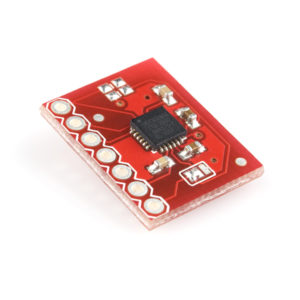Fall 2015 MicroBiped Motion Sensor
MOTION SENSOR TRADE-OFF STUDIES
By Railly Mateo (Manufacturing Engineer)
Approved by Paul Oo (Project Manager)
Approved by Railly Mateo (Systems Engineer)
| Parameters | Gyroscope (ITG 3200) | Accelerometer (ADXL335) |
| Input Voltage | 3.3 | 3.3 |
| Acceleration | 10,000G | 10,000G |
| Operating Temp Range | -40 TO +105 CELSIUS | -55 TO +125 CELSIUS |
| Storage Temp Range | -40 TO +125 CELSIUS | -65 TO +150 |
| Price | 16 to 20 dollars | 14 to 28 dollars |
| Dimensions | 3.0×3.0×0.9mm | 4 mm × 4 mm × 1.45 mm |
Overview:
The accelerometer above is a compact device designed to measure non-gravitational acceleration. When the object it’s integrated into goes from a standstill to any velocity, the accelerometer is designed to respond to the vibrations associated with such movement.
A gyroscope above is a device that uses Earth’s gravity to help determine orientation. Its design consists of a freely-rotating disk called a rotor, mounted onto a spinning axis in the center of a larger and more stable. As the axis turns, the rotor remains stationary to indicate the central gravitational pull, and thus which way is down.
Trade-Offs:
The table above gives specification comparisons between a gyroscope (ITG-3200) and an accelerometer (ADXL335).
Conclusion:
For our robot we were planning on using a gyroscope to measure the level of an incline on which our robot maybe standing on. However, the gyroscope only measures the change in the surface and then it stabilize itself. For example, if the gyroscope goes from flat surface to an incline, it will detect the differences in ground and then it will set this ground as its new flat ground. In the other hand, if an accelerometer goes from flat to incline, it will display the change in surface and maintain the angle of inclination. Therefore, an accelerometer should be used instead of a gyroscope.


